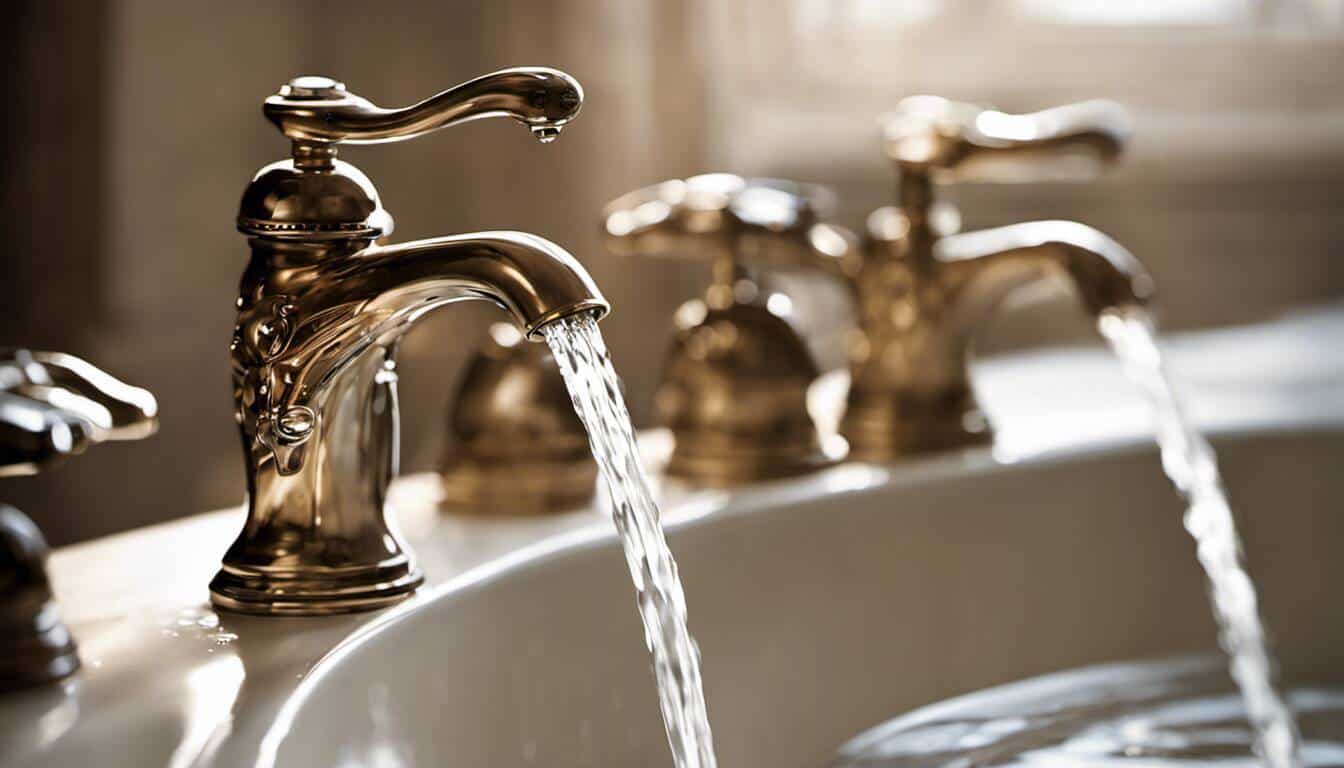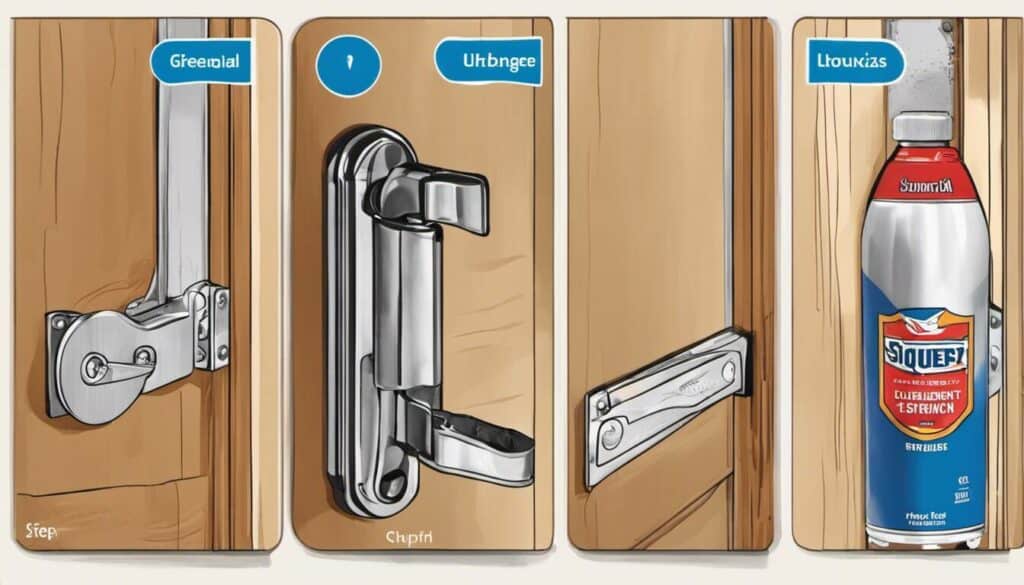Everyone has their unique home maintenance tale, but I don’t think anything quite matches the challenge I encountered with my bathroom faucet. I decided against hiring a plumber, thinking that installing faucets would save me money. After all, how hard could it really be? If you’re curious about how a simple plumbing issue transformed my tranquil home into a mini waterfall, you’ve come to the right place. I recount how I navigated endless trips to the hardware store and frantic Google searches in my battle with a stubborn bathroom faucet. This experience became my very own 1-hour home fix nightmare…
Our article “My Unforgettable Faucet Fiasco” tells the personal story of a homeowner who encounters challenges while replacing a faucet in their laundry room. It highlights the importance of careful planning, finding the right replacement that fits within existing drilled holes, and using special tools such as a rasp to gradually enlarge the hole to fit the new faucet. The article provides insights on installing the drain, using gaskets and connectors, and encourages readers not to get discouraged by DIY frustrations.

“The first step in avoiding a DIY plumbing fiasco is understanding your limitations. Whenever you’re in doubt or a situation seems too complicated to handle on your own, it’s better to seek professional help rather than attempting ambitious fixes and repairs that may backfire. For instance, if you’re struggling with a clogged toilet or your dishwasher isn’t draining properly, it might be time to call in the experts. Always remember, knowledge of plumbing basics and acknowledging professional intervention when required, is the key to avoiding a plumbing disaster. Even seemingly minor issues, like water tasting salty, could indicate a more serious problem that requires professional attention.”
Ferdinand Moss, Certified Master Plumber
Faucet Fiasco: The Unexpected Obstacle
In the world of DIY home improvement projects, there are moments that can turn even the most confident homeowner into a stressed-out mess. One such moment for me was my unforgettable faucet fiasco. It all started innocently enough when I decided to update the faucet in my laundry room. Little did I know that this seemingly straightforward task would quickly become an unforeseen obstacle.
Armed with measurements and research, I thought I had found the perfect replacement faucet. However, as soon as I attempted to install it, I realized that it didn’t fit properly in the existing drilled holes. Panic set in as I contemplated the possibility of having to return the faucet and start my search from scratch.
In my desperation, I turned to Google for solutions and stumbled upon a suggestion to use a tool called a rasp. This magical tool allowed me to gradually enlarge the hole in order to accommodate the new faucet. It required careful maneuvering and patience, but it was a lifesaver. Once again, I felt like there was hope for salvaging this project.
The unexpected obstacle of a misfitting faucet served as a reminder that even with careful planning, DIY endeavors can throw you curveballs. It’s important not to get discouraged when faced with challenges and seek out innovative solutions to overcome them.
Now that we’ve navigated through the unexpected obstacle of my faucet fiasco, let’s explore an essential aspect that played a significant role in this ordeal – the importance of quality parts.
The Role of Quality Parts
When undertaking any home improvement project, one aspect that should never be underestimated is using quality parts. In my faucet fiasco experience, opting for subpar components proved to be problematic and time-consuming.
Just like building a solid foundation is crucial for constructing a sturdy house, selecting quality parts sets the stage for a successful and hassle-free home improvement project.
Cheaply made parts can lead to leakages, malfunctioning, and even potential damage to your plumbing system. In my case, the ill-fitting faucet resulted from the poor craftsmanship of the component itself. It was a valuable lesson that investing in reputable brands and reliable products is worth it in the long run.
Moreover, using quality parts not only ensures durability and proper functionality but also simplifies installation. When you have confidence in the reliability of your components, it reduces the chances of encountering unexpected obstacles during the DIY process.
DIY Fixes: Trial and Error
When faced with a plumbing issue, it’s tempting to roll up your sleeves and attempt a DIY fix. After all, with countless tutorials and articles available online, it seems like a cost-effective solution. However, my experience with a faucet fiasco in my laundry room taught me that DIY fixes can sometimes lead to trial and error.
In my determined quest to replace an old faucet with an updated model, I thought I had done thorough research and measured the dimensions accurately. But when I excitedly brought home the new faucet, disaster struck – it didn’t fit the existing drilled holes. Frustrated and perplexed, I realized that I needed to find a replacement that matched the hole spacing precisely.
Undeterred by this setback, I embarked on a journey of trial and error; purchasing different faucets in the hopes of finding one that would fit perfectly. Unfortunately, each attempt resulted in disappointment as none of the faucets aligned with the pre-drilled holes.
This process involved numerous trips back and forth to the hardware store, wasting time and money on inappropriate fixtures. It was a frustrating lesson in understanding the importance of careful measurements when undertaking DIY projects.
- According to a survey conducted by HomeAdvisor, almost 30% of homeowners report that they’ve experienced complications while replacing or repairing faucets.
- The Environmental Protection Agency reports that leaky faucets drip at least one time per second can waste more than 3,000 gallons per year – equivalent to the amount needed for more than 180 showers.
- A study in the Journal of Water and Health found that older faucet models can contain notable amounts of lead which may lead to serious health issues, underpinning the importance of proper and periodic faucet replacements.
Using a Rasp for Installation Issue
With no suitable faucets found after weeks of searching, hope was waning, but I refused to give up on my DIY endeavor. A knowledgeable friend suggested utilizing a tool called a rasp to gradually enlarge the existing holes in order to accommodate the new faucet.
Curiosity piqued, I purchased a rasp from a local hardware store and began meticulously enlarging the drilled holes. The process required patience and precision as I worked diligently to avoid damaging the surrounding area. Slowly but surely, the holes widened until they were a perfect match for the intended faucet.
It was akin to sculpting – chiseling away excess material bit by bit until the desired shape emerged. The rasp proved to be invaluable in resolving the installation issue and saving me from further frustration.
Finally, I found a perfect fit with an American Standard faucet that seamlessly aligned with the newly enlarged holes. As I completed the installation, a wave of relief washed over me – my perseverance and resourcefulness had paid off.
While my faucet fiasco taught me valuable lessons about the challenges of DIY fixes and the importance of precise measurements, it also emphasized the significance of knowing when to seek professional assistance. In the upcoming section, we will explore the role of professional plumbers and how they can save us from plumbing disasters.
- The experience of the writer shows that DIY repairs can be challenging, but with perseverance and resourcefulness, it is possible to resolve installation issues. The writer learned valuable lessons about the importance of precise measurements and knowing when to seek professional assistance. In this case, a knowledgeable friend suggested a tool called a rasp that proved invaluable in resolving the issue.
The Role of Professional Plumbers
When faced with plumbing problems, it’s tempting to take matters into your own hands and attempt a do-it-yourself (DIY) approach. While some minor issues can be successfully resolved by homeowners, it’s essential to recognize the valuable role that professional plumbers play in ensuring efficient and long-lasting solutions.
As someone who has experienced firsthand the consequences of DIY plumbing gone wrong, I cannot stress enough the importance of seeking expert help when dealing with complex or major plumbing tasks.
A few years ago, I foolishly decided to replace a leaky faucet in my kitchen without any prior plumbing experience. Armed with online tutorials and a sense of determination, I confidently started dismantling the old faucet, only to find myself knee-deep in a flood within minutes. It was at that moment when I realized the significant value professional plumbers bring to the table.
Professional plumbers possess the knowledge, training, and experience necessary to diagnose and fix plumbing issues effectively. They are equipped with specialized tools and have access to high-quality materials that are often beyond the reach of regular homeowners. Additionally, they stay up-to-date with current building codes and regulations, ensuring that the work is completed in compliance with safety standards.
While hiring a professional plumber may incur costs, it is an investment that pays off in terms of time saved, peace of mind, and avoiding costly mistakes. So, before you grab your toolbox and embark on a DIY plumbing adventure, consider reaching out to a licensed plumber who can provide expertise that is invaluable when dealing with complex issues.
Having emphasized the significance of professional plumbers, let’s now explore the breakdown of replacement and installation costs associated with faucets.
Breakdown of Replacement and Installation Costs
Understanding the cost implications of replacing or installing a new faucet is crucial when planning a home improvement project or addressing plumbing concerns. It’s important to note that the average cost of faucet installation or replacement can vary depending on factors such as faucet type, location, special features, and regional variations.
In the kitchen, standard low-arc faucets can be as affordable as $25. However, if you desire a high-arch faucet, you may see prices ranging between $50 and $2,500. Pull-out faucets typically fall within the price range of $35 to $2,000. For those looking to enhance their culinary experience with pot fillers designed specifically for filling large pots or pitchers, costs can range from $100 to $1,500.
Bathroom sink faucets generally range from $25 to $250, with luxury material faucets potentially costing up to $2,500. Bathtub and shower faucets have an average price range of $35 to $3,500. Luxury showerheads can even reach prices of up to $6,500.
Outdoor hose bib replacements typically cost between $100 and $500, while utility sink installations in laundry rooms or mudrooms can be more budget-friendly at around $25 to $200.
Please note that these prices are approximations and may vary based on geographical location and other influencing factors.
Now that we have an overview of the breakdown of costs associated with faucet replacement and installation let’s focus on essential lessons learned when navigating plumbing problems.
Lessons Learned: Navigating Plumbing Problems
Plumbing problems can quickly turn into nightmares if not handled properly. Through my own experience, I learned some valuable lessons on how to navigate these challenges effectively. First and foremost, it is crucial to do thorough research and planning before starting any plumbing project. Understanding the scope of the work, necessary materials, and potential pitfalls can save you from unnecessary headaches down the road.
Another lesson I learned is the importance of having the right tools for the job. Investing in quality plumbing tools can make a significant difference in the outcome of your project. Additionally, taking the time to learn basic plumbing skills or enlisting professional help when needed can prevent costly mistakes and ensure that the job is done correctly.
Now let’s delve into an essential aspect of plumbing experiences – the importance of reliable customer service.
Importance of Reliable Customer Service in Plumbing
When it comes to plumbing services, reliable customer service can make all the difference. Whether you’re facing a major plumbing emergency or undertaking a DIY project, having access to knowledgeable and responsive professionals can alleviate stress and ensure success.
Imagine waking up to a burst pipe spewing water all over your home. In such a high-stress situation, you need a plumber who will promptly answer your call and provide guidance on mitigating further damage until they arrive. Swift action from a plumber with excellent customer service can minimize both financial and emotional losses during emergencies.
Moreover, reliable customer service extends beyond emergencies. When embarking on a DIY plumbing project, there may be times when you encounter unexpected challenges or have questions that require expert advice. A plumbing company with good customer service will be readily available to offer guidance, troubleshoot issues remotely, or dispatch a professional if necessary.
Having reliable customer service also means working with professionals who prioritize clear communication, transparency in pricing, and timely completion of projects. This ensures that all parties involved are on the same page and that there are no surprises or hidden costs along the way.
Some may argue that customer service is not as important as technical expertise when it comes to plumbing. While skill and knowledge are undoubtedly crucial, excellent customer service acts as a foundation for a positive experience. It enhances trust, builds lasting relationships, and provides peace of mind to customers who rely on the expertise of plumbing professionals.





It’s a known fact that faucets need regular valve changes, or they can turn into an indoor waterfall with no notice. Been there, done that – when I started this journey in my early twenties, I ignored an ominous drip and woke up to a submerged bathroom.
Couldn’t agree more with you Tarquin, ignoring any sign, especially an ominous drip could be a silent indicator pointing towards a larger problem. Regular maintenance is the key!
Yes, Maynard! Your words ring true with my long drawn experience. A small leak can indeed snowball into a major problem if not addressed promptly. Proper maintenance is essential but sometimes even that isn’t enough. When faced with any worrisome sign, do not hesitate to consult with professionals; caution always trumps regret!
Now that’s a tale I can relate to! In my own “toilet turmoil”, as I like to call it, I accidentally lodged an odd-sized wrench into the toilet tank, causing an unanticipated geyser eruption in my bathroom. It was there where I learned that not all tools are suitable for every task…especially when you’re dancing around in ankle deep water at 2am. The embarrassment of explaining why I needed emergency plumbing during quarantine will forever be etched in my memory.
While it seems your “toilet turmoil” ended in quite a spectacle, rest assured that you’re not alone O’Sullivan, many enterprising DIY enthusiasts have found themselves battling against the unexpected geyser of their plumbing systems. And every tool indeed has its own specific uses – a lesson we all learn one way or another!